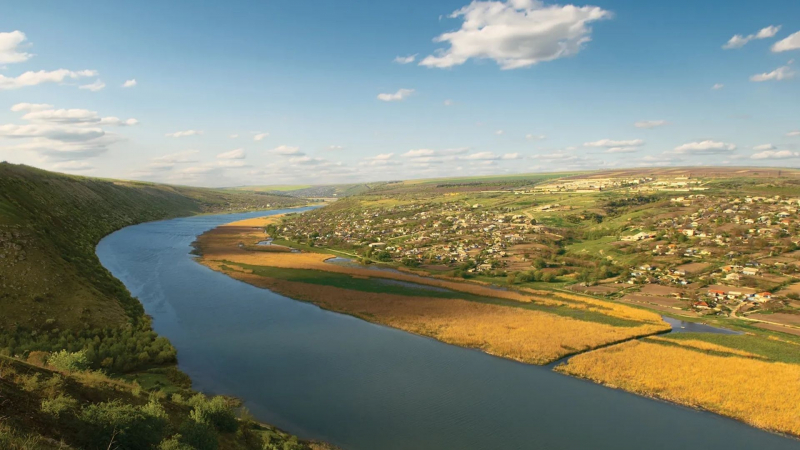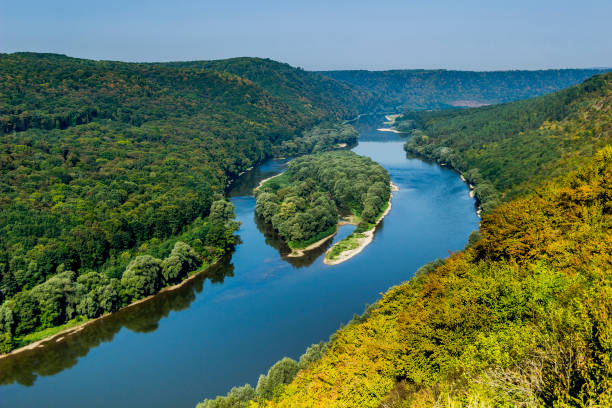Dniester

The Dniester River (1,362 km) flows through Ukraine, Moldova (from which it almost completely separates the breakaway entity of Transnistria), and finally into the Black Sea on Ukrainian soil. The name Dniester comes from the Sarmatian word “dniester”, which means "near river." The Dnieper, which is likewise Sarmatian in origin, has the reverse meaning, "the river on the other side”. The Dniester is named after the Ancient Greek word "rapid."
The Dniester River was the epicenter of one of the world's most advanced civilizations during the Neolithic period. From around 5300 to 2600 BC, the Cucuteni–Trypillian culture flourished in this area, leaving thousands of archeological sites behind. Their towns had up to 15,000 people, making them one of the world's first big farming communities. The little area to the east of the Dniester that had been part of the Moldavian SSR declined to participate in the Republic of Moldova's declaration of independence in 1991, and declared itself the Pridnestrovian Moldavian Republic, or Transnistria, with its capital at Tiraspol on the river.
Length: 1,362 km









